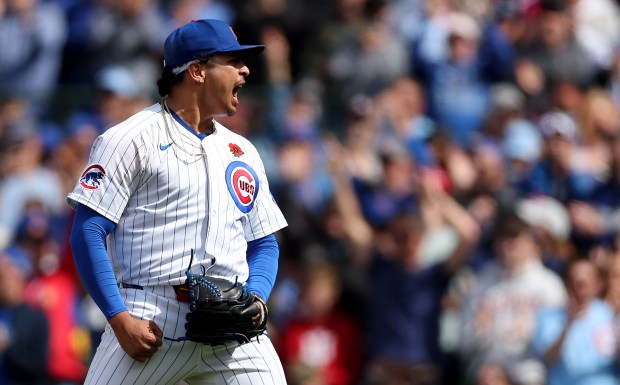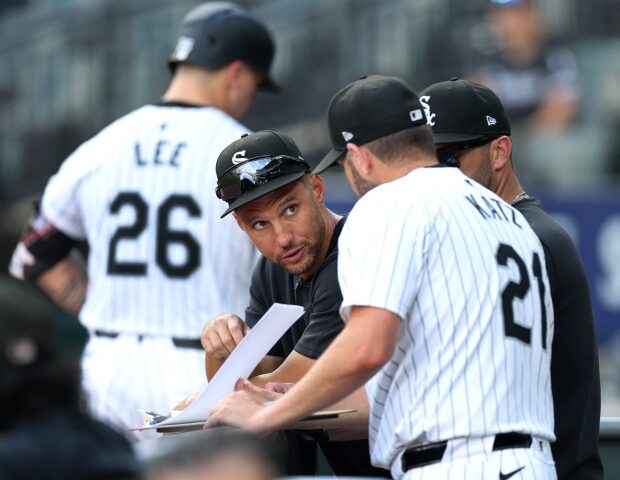When he released “New Blue Sun” last November, André 3000 pulled off one of the biggest volte-faces in pop music history. Instead of releasing a much-anticipated hip hop album, the former OutKast MC unveiled a wafting ambient record that shocked as much as it soothed. Some fans were delighted. Others felt betrayed.
The naysayers may not have been listening closely enough. André Lauren Benjamin (who goes by André) has long dropped hints that he was headed in this direction. The squawking tenor sax solo at the end of “She Lives in My Lap”? That was André, not a studio musician. Been on his SoundCloud lately? Perhaps you heard 2018’s “Look Ma No Hands,” a bass clarinet meditation dedicated to his late mother; James Blake supported him on piano. Saw “Everything Everywhere All At Once”? The flute laced throughout the soundtrack is André, too.
Then, there’s the work he’s put in outside the public eye. André, 49, picked up saxophone more than 20 years ago but switched to clarinet when he learned that was the instrument on which John Coltrane cut his teeth. He’s tried bass clarinet, even oboe. But the flute spoke to him with the most clarity — not steel transverse flutes, but wooden, non-keyed flutes from global folk traditions, from the Japanese shakuhachi to the Mayan double flute. André now estimates he owns some 75 flutes, some of which he’s made himself. Calling the Tribune during a tour stop in Seattle, he admits he’d picked up “maybe eight new flutes” from an Oregon music shop the day before.
But the corner that’s most generously embraced André’s new direction is the international free jazz community. “New Blue Sun” isn’t jazz, per se, but that didn’t keep global jazz festivals from Newport to North Sea from inviting him and his New Blue Sun band as headliners.
“It’s crazy to me, because I’m so green at this, in a way. I feel very, very intimidated stepping into these places — it’s the belly of the beast of the best of best,” André said.
That community is full of Chicago connections. Kahil El’Zabar, the bandleader of the towering free jazz trio Ethnic Heritage Ensemble, also headlined many of those festivals. During his last sweep through Chicago, André invited multi-instrumentalist Joshua Abrams, of the outré Natural Information Society ensemble, and the incantatory clarinetist-composer Angel Bat Dawid (the Tribune’s 2021 Chicagoan of the Year for Jazz) to join his New Blue Sun band. Making the connections was drummer Carlos Niño, the closest of André’s recent collaborators and signed to Chicago-based alt-jazz label International Anthem.
“He’s a magician, and a very advanced technician,” said Dawid, who grew up admiring André from his OutKast days. “He can play any instrument he wants, because André’s the instrument. The flutes are just a vessel.”
André returns to Chicago on Oct. 21, when he and Meshell Ndegeocello — who released a stunner of her own two months ago with “No More Water: The Gospel of James Baldwin” — play the Salt Shed. The following interview has been edited and condensed for clarity.
Q: The public treated “New Blue Sun” as a dramatic about-face, but we’ve since realized just how deep the roots of this tree are — they go back to at least 2003. How long had you been playing woodwinds before that?
A: Maybe a few years. I’ve always been interested in the things that make music. I produced nothing on the first OutKast album, but I started to produce on “ATLiens,” and that’s when I got interested in instruments. I bought drum machines and keyboards first, then bass guitar. On the road with OutKast, I went to a pawn shop and found a bass clarinet. Clarinet and saxophone always interested me because I was a fan of jazz — of Coltrane, of Eric Dolphy.
Coming from a hip hop way of being, I never took lessons. I just kind of picked it up, and I was able to play and get sound out of it. I was making noise more than anything, but I was really interested in the quality of the sound.
Q: Sometimes artists will rebrand or release music under a new name when they take a creative pivot like this. But you very intentionally released “New Blue Sun” as André 3000. Why is that?
A: In retrospect, I’ve asked myself, Would I have been better off releasing it under a new name? But I’m glad I didn’t. The ridicule that I get from it is the thing I did not expect. If I’m a fan of anybody, I’m not waiting 17 years for this great rap album to come out. I’m thinking, “Well, that ship has sailed.” I felt like the name “André 3000” showed the bigger story — the journey from where I was to now. I kept it so that wouldn’t get lost.
Q: You mentioned the resistance from rap heads about this album. I’m wondering if you’ve experienced any of the reverse — any skepticism or gatekeeping from jazz musicians.
A: It’s kind of funny: The backlash is actually not from the rap community, or the jazz and spiritual jazz community. There’s actually more support — surprising support — from both sides. I think it’s more (OutKast) fans, which I understand. I always try to put myself in their shoes: If my favorite rapper said, “I’m not rapping,” and I like it, I like it. But if I don’t, I move on. I think some people take it as blasphemy or something.
Q: You’ve been spotted playing wooden flutes around Los Angeles for a few years now. But much of “New Blue Sun” was recorded on an electronic wind instrument you’d never played before recording. Why were you moved to foreground an instrument that was so new to you, rather than these other acoustic flutes you’d spent so much time perfecting?
A: That’s the beauty of it: None of this was ever planned. My idea for the album was to have all these wooden instruments, but it just so happened I’d had an electronic wind instrument for a little while. At the last minute, I brought it to the studio, thinking, “Well, maybe I’ll try it out.” It ended up being something I really enjoyed — it gave me a lot of range I didn’t know I could reach. The first song on the album, you’re hearing me learn what I can do with it — like, “Whoa, I can play a fake oboe!”
There’s a real kid-like quality to the exploration. The material of discovery is so rare that when you get a chance to present it, you’ve got to do it. There’s no other time that I can take something out of its box and play it 20 minutes later. Now, there’s a record of it.
Q: As a listener, I’ve experienced this joy of discovery in miniature while scrolling on social media over the past year. You’ve just turned up, out of nowhere, in posts by Chicago free jazz musicians I admire. In your last run of local shows, you even shared stages with some of them. How’d that come about? Do you hit up local talent when you roll through cities?
That’s the plan. A lot of these artists I knew of — like, I’m very aware of the Art Ensemble of Chicago, and the deep history there. Going through records and producing, I know some of these acts from the ’70s and ’80s. Now, we’re seeing younger people carry that on. So, if we’re in the city, we reach out to new players, like Angel, and we reach out to killer OGs — people who have played with Yusef Lateef and Pharoah Sanders. In Japan, we’ll reach out to the OG and new shakuhachi players coming up. We do that every night to make sure we get in that discovery. We don’t even reference the album.
I’m new to this, you know. But I’ve listened to this music for a long time. It’s in my blood and intention.
“André 3000: New Blue Sun Live with support from Meshell Ndegeocello” is 7:45 p.m. Oct. 21 at the Salt Shed, 1357 N. Elston Ave.; tickets $40-$125 at saltshedchicago.com
Hannah Edgar is a freelance critic.




